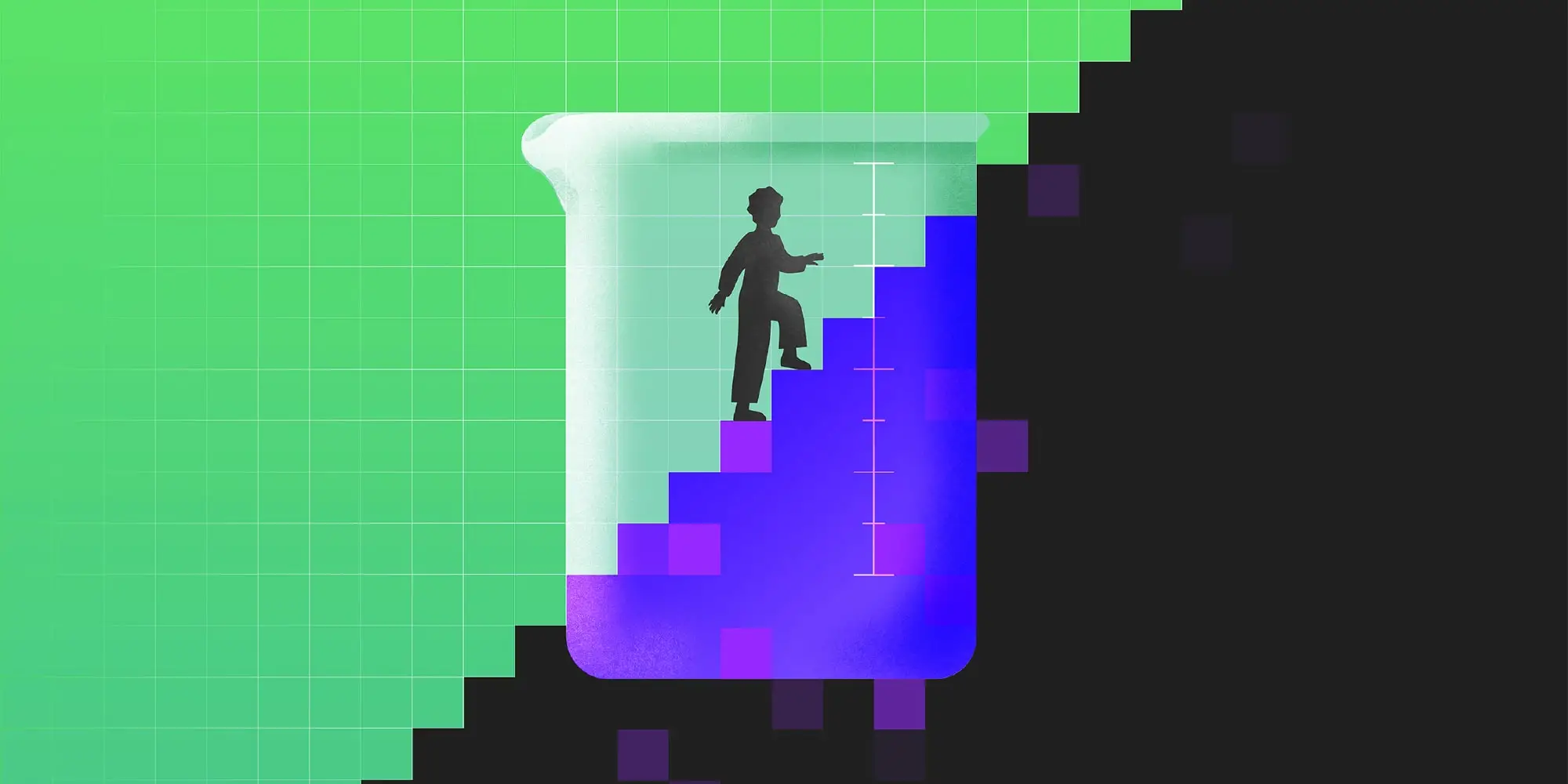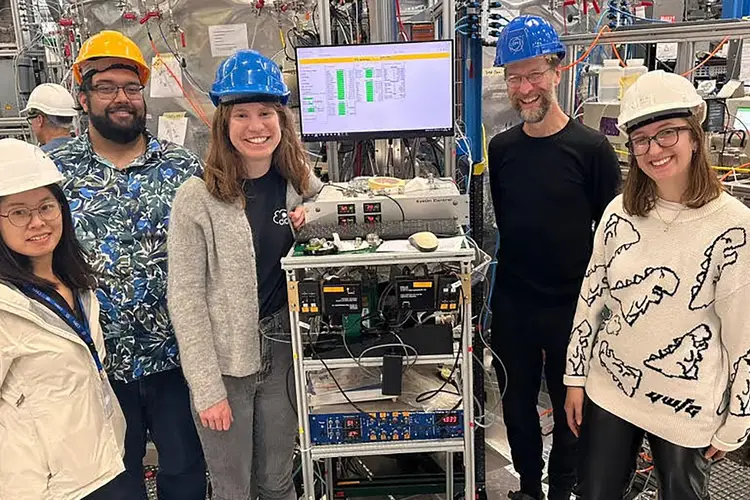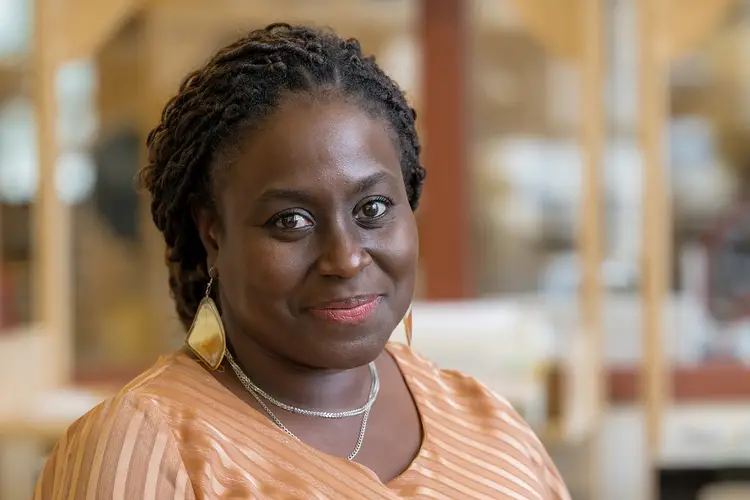
Teachers Bring Introductory Chemistry to the Digital Age
Media Inquiries
Carnegie Mellon University Professor David Yaron(opens in new window) believes a hybrid approach to chemistry education brings the best of both in-person instruction and virtual learning and redefines how students learn foundational science.
“For over two decades, my colleagues and I have been dedicated to using online courseware to substantially increase student success," Yaron said. "With REAL CHEM, I believe we are now closer than ever to achieving this goal.”
Yaron helped design REAL CHEM(opens in new window), courseware for introductory chemistry classes that marries in-person instruction, demonstration, and lab work with online instruction and practice. The approach is changing how chemistry is taught in community colleges and universities. The courseware allows students to learn at their own pace, build on what they already know, and apply what they are learning in real-world contexts.
The platform allows instructors to blend in-person teaching with online instruction without stressing about creating their online content, a struggle many had following the COVID-19 pandemic, Yaron recalled.
"(Instructors) were spending huge amounts of time developing online content, and then they would go into class, and it was like, now what do I do? I taught it already online," Yaron said. "If we built the online component, then they could just focus on what they were doing in class and how to better connect with their students."
REAL CHEM builds on the successes of ChemCollective(opens in new window) and Carnegie Mellon's Open Learning Initiative(opens in new window), both of which Yaron helped start in 2000 to make learning more accessible for chemistry students. Yaron uses that experience to hone in on effective teaching techniques. For example, he said students learn more when working with interactive content than they do through reading textbooks.
Carnegie Mellon research also shows that students learn at the same rate, regardless of how much knowledge and experience they start with. A student who didn’t take Advanced Placement chemistry in high school, for example, will need more time to learn the same material than someone who has had it, Yaron said, but this is only because they have more to learn, not because the lack of background slows their learning.
Gizelle Sherwood(opens in new window), contributor to REAL CHEM and director of undergraduate studies and laboratories in the Department of Chemistry, teaches primarily first- and second-year chemistry. She said the REAL CHEM courseware has been an equalizer.
"It didn't quite matter what high school you were at, it didn't matter whether you did AP chem or not AP chem, it doesn't matter what your experiences have been in the past," she said. "The courseware felt like base foundation for everyone. I've had kids who literally have not had that much experience with chemistry and kids who’ve had that experience, and assigning these as pre-reading for a kid meant that they were coming into the classroom feeling equivalent to each other."
High school, community college and college teachers across the U.S. are integrating REAL CHEM and related programs into classes. At the University of California, Riverside, Assistant Professor of Teaching Joshua Hartman(opens in new window) started using OLI in his undergraduate chemistry classes in the fall of 2022. His general chemistry courses have about 250 students, mostly majoring in a field of STEM other than chemistry.
Hartman said students take mastery exams at the end of each unit. If they are unsatisfied with results, they can review the concepts in OLI and retake the exams later in the quarter.
"Say the student doesn't get the score that they would have liked, of course the lecture portion of the class and lab are moving on through the content that follows,” Hartman said. “So what we've done is essentially link students back to the appropriate content in REAL CHEM or in OLI."
Hartman said the method leads to a growth mindset and has led to higher grades in the course, particularly for first-generation college students, a group that has improved a full letter grade on the final exam(opens in new window).
During the spring semester of 2024 a study comparing teaching methods included two of his sections. One class was required to use the interactive online materials, while the other class had access to the materials but were only required to be familiar with them. On the midterm exam, the class requiring online materials scored almost two letter grades higher than the other class.
"This two-letter grade difference also mapped back to students using practice exams, they'd been going back to OLI to strengthen their understanding, and they'd been taking the mastery exams," he said. "This other group, more or less, was not engaging with the content. They're doing the minimum they need to turn in a homework assignment."
As Yaron sees more results from professors using the REAL CHEM material, the platform continues to evolve. With the support of grants from the Bill and Melinda Gates Foundation and the National Science Foundation, Yaron is developing a hybrid course for the second semester of first-year chemistry and a course on general organic and biological chemistry for nurses and others who earn a two-year degree to work at hospitals. The new offerings will learn from data they received using generative artificial intelligence in past classes.
Generative AI in the courseware is similar to ChatGPT, where students can ask questions. It also knows what page the student is on and what assignments are coming due. Data is generated showing which students use the online tools and how they used them, and at the end of each semester Yaron and Sherwood said they have noticed that A and B students are the ones who use it the most.
"At midterm after the first exam, we often put up a plot where the Y axis is the grade on the exam and the X axis is how many interactions people had with REAL CHEM, and we show this correlation, to encourage more students to utilize the platform," Yaron said.


